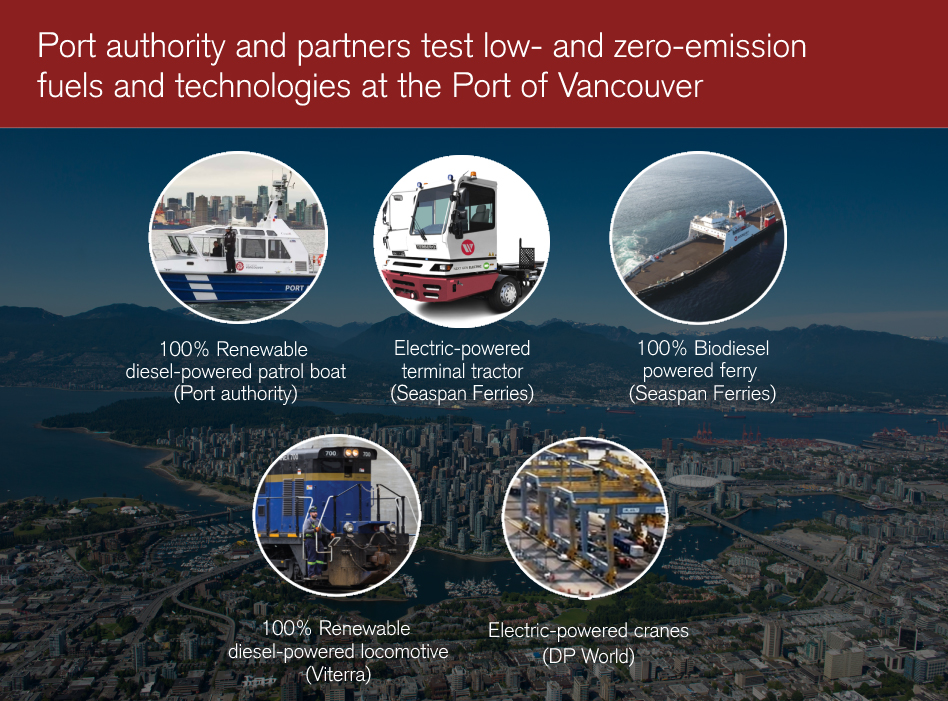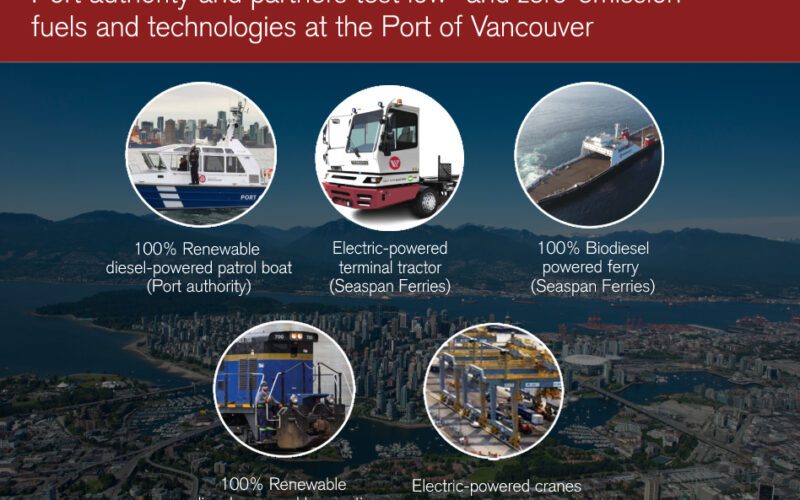
Canada’s biggest seaport, the Port of Vancouver, is paving the way for sustainable fueling and technology with the help of industry stakeholders and a joint funding initiative, the Vancouver Fraser Port Authority announced Dec. 6.
Thanks to the Low-Emission Technology Initiative, the port authority and the Province of British Columbia each contributed $1.5 million to help move port operations toward low-emission fuel use.
The initiative, according to the port authority, involves demonstrating battery-electric terminal tractors, making commercial ferries run completely on biodiesel, powering a crane with hydrogen and running a terminal locomotive and a port patrol boat completely on renewable diesel.
It is part of the port authority’s larger effort to transition out of port-related pollution by 2050 and contribute to the Government of Canada’s goal to reach net-zero emissions by 2050.
“Charting our course towards a zero-emission port starts with collaborative efforts like these—between the port authority, the port community, and government—to test innovative new low-emission fuels and technologies that reduce emissions while keeping trade moving through the Port of Vancouver,” Port Authority President and CEO Robin Silvester said.
“We plan to continue taking tangible steps, in close collaboration with our partners across the port, towards our goal of phasing out all port-related emissions by 2050,” he added.

